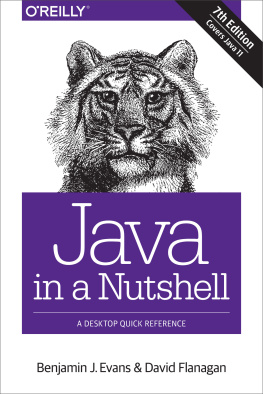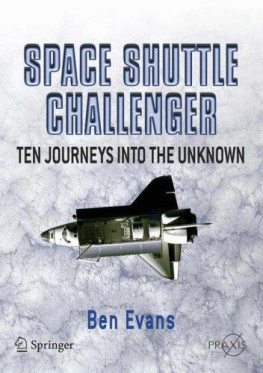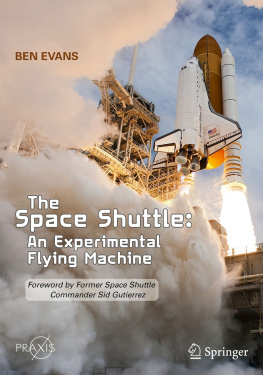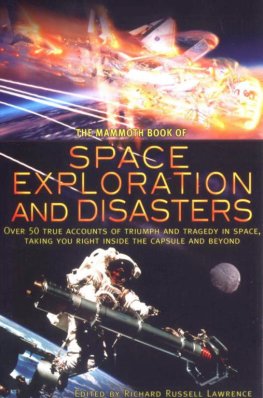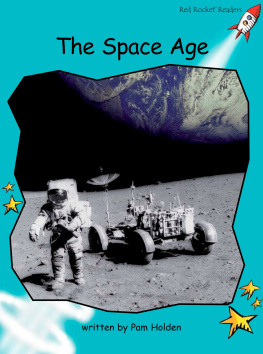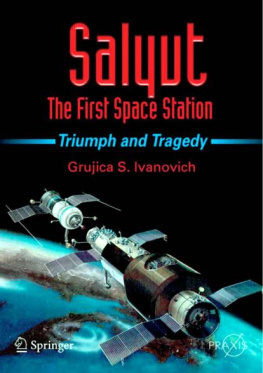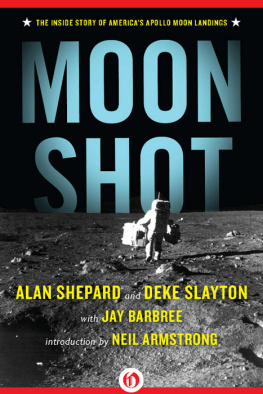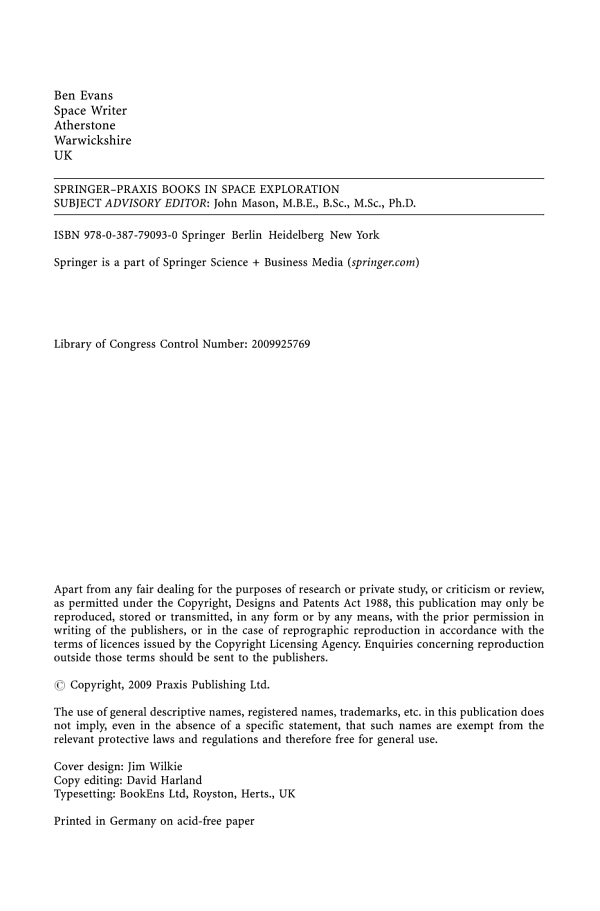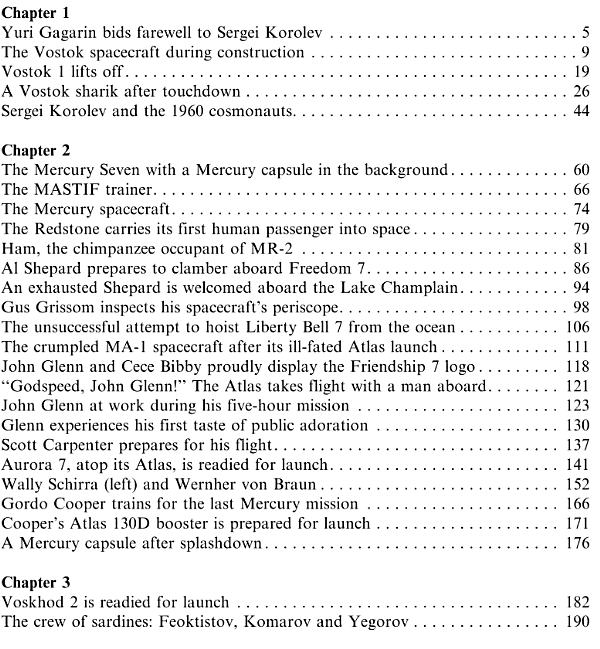Escaping the Bonds of Earth
The Fifties and the Sixties
To Michelle
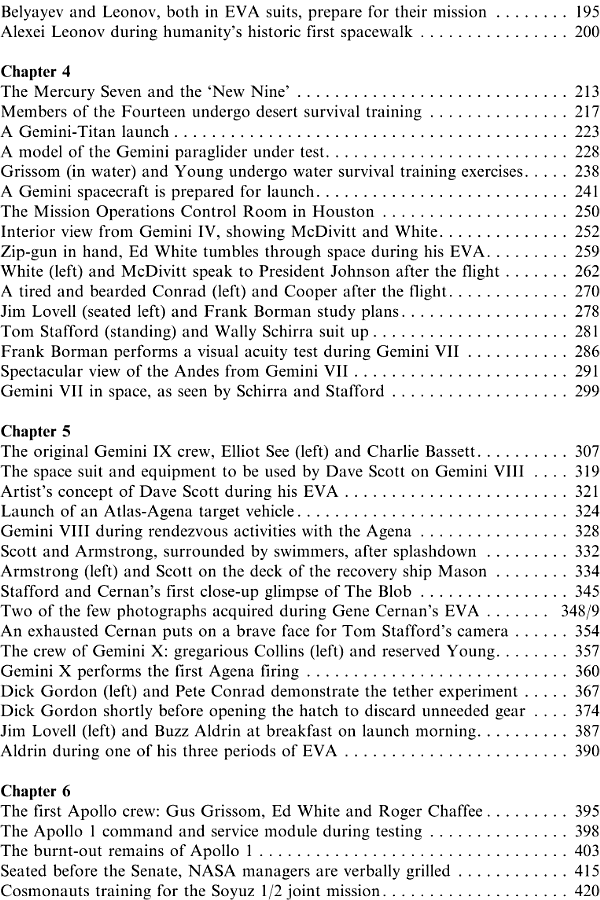
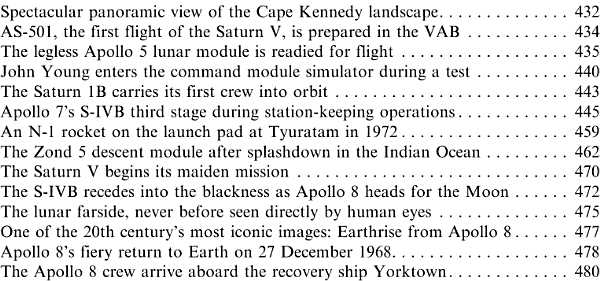
Author's preface
Overshadowed by the dark events of Vietnam, civil rights, the Kennedy and King murders, the Bay of Pigs and a close shave with nuclear holocaust, the Sixties will hopefully also be remembered by history as the decade in which humanity first ventured into the heavens. Men and a woman left Earth's atmosphere, spacewalked hundreds of kilometres above their home planet, rendezvoused and docked their ships together and travelled to the Moon for the first time. These triumphs, however, were tempered by tragedy: three astronauts asphyxiated in a launch pad fire, then a cosmonaut killed during his ill-fated descent to Earth. Still, by the end of the decade, both the United States and the Soviet Union had firmly established their presence in space. The excitement and euphoria which these years inspired were felt not just in America and Russia, but throughout the world. By the time Frank Borman, Jim Lovell and Bill Anders circled the Moon on Christmas Eve 1968, it is said that no fewer than a billion people back home were watching or listening.
This book explores the history of humanity's early exploration of space, beginning with the pioneering flight by Yuri Gagarin and ending with Apollo 8's circumnavigation of the Moon. It will, I hope, form the basis of a series to commemorate the first half-century of human exploration in space. By the time of that momentous anniversary in 2011, perhaps, the ongoing drive towards private spaceflight and `space tourism' will begin to make human journeys into the heavens so commonplace that it will be impossible to catalogue them all! It is my most fervent wish that a further volume covering the decade from 2011 will be impossible to write, because men and women will be in space so often and human spaceflight will have changed from the realm of the few and the privileged to the realm of the many.
My intention in writing this volume was to convey some of my own enthusiasm for what was one of the most remarkable decades in human history. Born in 1976, sadly, I missed it all, and still await the chance to see my first manned lunar landing. Still, I have attempted to introduce the reader to some of the problems faced in the early days: from the basic questions of whether men could breathe, eat and avoid going mad in space, to more complex issues of the kinds of fuels and atmospheres to be used in rockets and spacecraft and the techniques needed to accomplish orbital rendezvous, docking and reaching the Moon. Many of the techniques pioneered by the trailblazing heroes of the Sixties continue to be used today by Shuttle and International Space Station crews and close parallels can be drawn between Apollo lunar mission design and plans for the United States' proposed return to the Moon in 2020. However, in my mind, at least, the real achievement of that handful of early astronauts and cosmonauts is that they drew our attention away from petty problems on Earth and refocused it once more on the excitement of exploration, the thrill of discovery and the conquest of new frontiers. That legacy, that passion for adventure and that yearning to stretch our horizons, will surely drive the next generation of space explorers and inspire our next 50 years in space.
Ben Evans
Atherstone, February 2009
Acknowledgements
This book would not have been possible without the support of a number of individuals to whom I am hugely indebted. I must firstly thank my beautiful wife, Michelle, whom I married in August 2008, for her constant love, support and encouragement throughout the two long years it has taken to plan, research and write this manuscript. As always, she has been uncomplaining during the weekends and holidays when I sat up late typing on the laptop or poring through piles of books, old newspaper clippings, magazines, interview transcripts, press kits and websites. It is to her, with my love, that I wish to dedicate this book. My thanks also go to Clive Horwood of Praxis for his enthusiastic support and to David Harland for reviewing the manuscript. Others to whom I owe a debt of thanks include Sandie Dearn, Ken, Alex and Jonathan Jackson, Malcolm and Helen Chawner, Jemma Jessica James and Shaun Joicey, Vicky Farmer and Leanne and Jonathan O'Neill. To those friends who have supported and encouraged my fascination with all things `space' over the years, many thanks: to Andy Salmon, Dave Evetts, Mike Bryce and Rob and Jill Wood. Finally, it has become customary for me to offer some grudging acknowledgement to the various pets which have entered into my extended family: the cat count presently numbers four (Simba, Sooty, Benjy and Bailey) and our own excitable pair of golden retrievers: biscuit-hunting Rosie and woodwork-chewing Milly.
From the East
CONTRASTS
The Sixties were a decade of contrasts. Their three thousand, six hundred and fifty-three days were marked by some of the most tumultuous, violent and devastating, yet far-reaching, inspiring and influential events in human history. They saw enormous political, social and cultural change and have been seen as a nostalgic era of peace and liberalism, overshadowed by a dark cloud of hatred, oppression and wanton excess. They began, ominously, under the longest shadow of the Cold War. Only days after the first man rocketed into space, a newly-elected United States president and a feisty Soviet premier locked horns over the fortunes of a young Cuban revolutionary, bringing the possibility of nuclear war onto an international stage.
As the decade wore on, that very same president was publicly cut down by an assassin's bullet as, indeed, was his younger brother a few years later and the Soviet leader was toppled from office in 1964, hours after bragging to the world of his nation's latest space triumph. Elsewhere, decades of servile colonialism drew to an end as a handful of African countries finally achieved independence from European mastery; some evolving into stable democracies fit for the modern world, others degenerating into corrupt and despotic dictatorships. Younger generations, inspired by the unequal conservative norms of the time, as well as an increasingly unpopular war brewing in Vietnam, cultivated a social revolution which swept across much of the western world.
Simmering discontent in America's black community boiled over with the 1968 murder of Martin Luther King in Memphis and, a year later, with the point-blank assassination of Black Panther Party co-founder Fred Hampton in Chicago. Meanwhile, Vietnam consumed ever-increasing numbers of lives on both sides including, at My Lai, the infamous massacre of hundreds of unarmed civilians and enforced conscription led to massive opposition, culminating in the 500,000-strong Moratorium protests in late 1969. Voting rights were questioned: why, asked American youth, should they die for their country if they were barred from casting at the ballot box? Remarkably, amid all this chaos and carnage, men visited the Moon and, as one observer told Apollo 8 astronaut Frank Borman, saved what was otherwise the darkest point of the decade.


